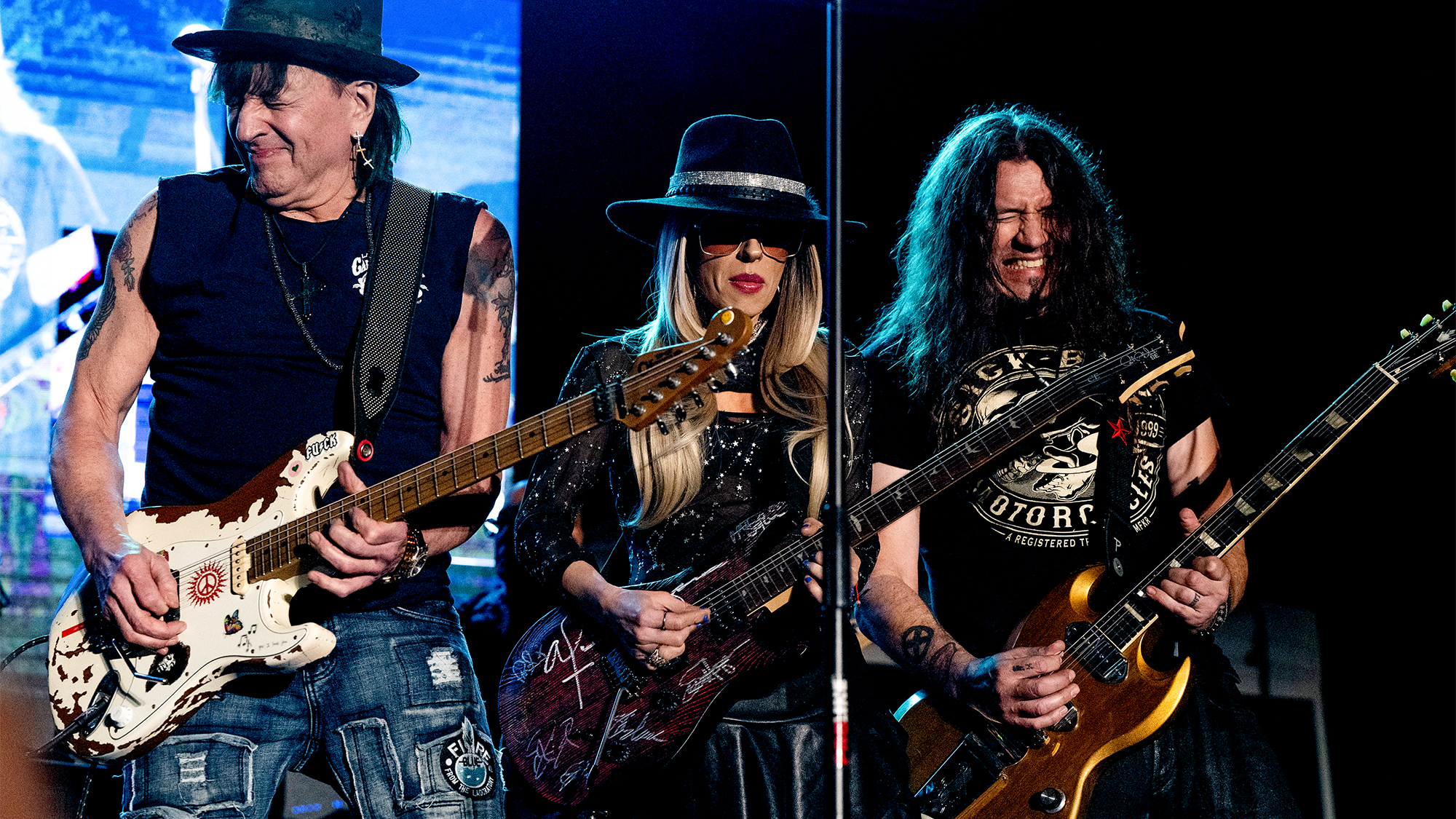“The ES-295 was primed for the grind and sizzle that came to define the sound of rock guitar”: Overshadowed by the Les Paul, the Gibson ES-295 brought rock to concert stages at the hands of Elvis Presley guitarist Scotty Moore
As played by Danny Gatton, Geordie Walker and Johnny Marr, the ES-295 was Gibson’s 'other' gold-finished electric guitar
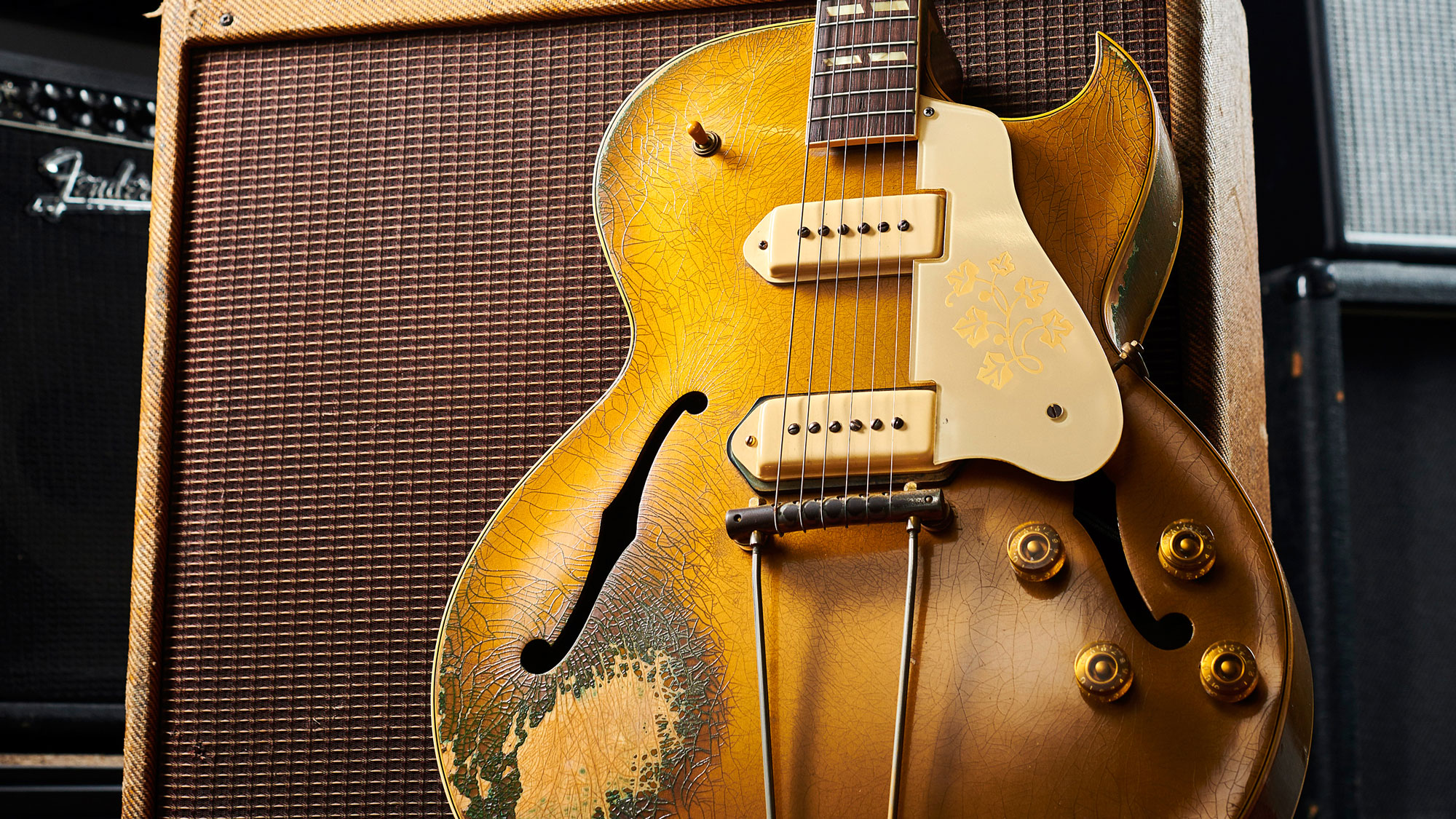
Viewed with 21st century hindsight, the two radical gold-finished guitars released by Gibson in 1952 appear about as rock and roll as they come. In fact, that term was barely in use when the Les Paul and ES-295 arrived that year, and neither was conceived with rock in mind, even though both would help define its look and sound.
The March 1951 single Rocket 88 by Jackie Brenston and His Delta Cats (a front for Ike Turner and His Kings of Rhythm) is often cited as the first rock and roll song, but the genre didn’t fully hit its stride until Elvis Presley’s That’s All Right hit the airwaves in July ’54.
And when it hit the stage, Scotty Moore was right alongside him, churning out those signature riffs on his gold Gibson ES-295. It might not have been the birth of rock as such, but for many, that sound, that look and those riffs are seen as the birth of rockabilly, at least.
The ES-295 was essentially a hot-rodded ES-175, souped up with some input from Les Paul himself. When it debuted in 1949, the ES-175 was Gibson’s first archtop guitar constructed with top, back and sides made from laminated maple in a bid to cut down on feedback in a guitar that was primarily intended to be amplified, rather than used acoustically.
It had a single P-90 pickup in the neck position and a sunburst finish (natural was available later), and it retailed at $175, hence the model name.
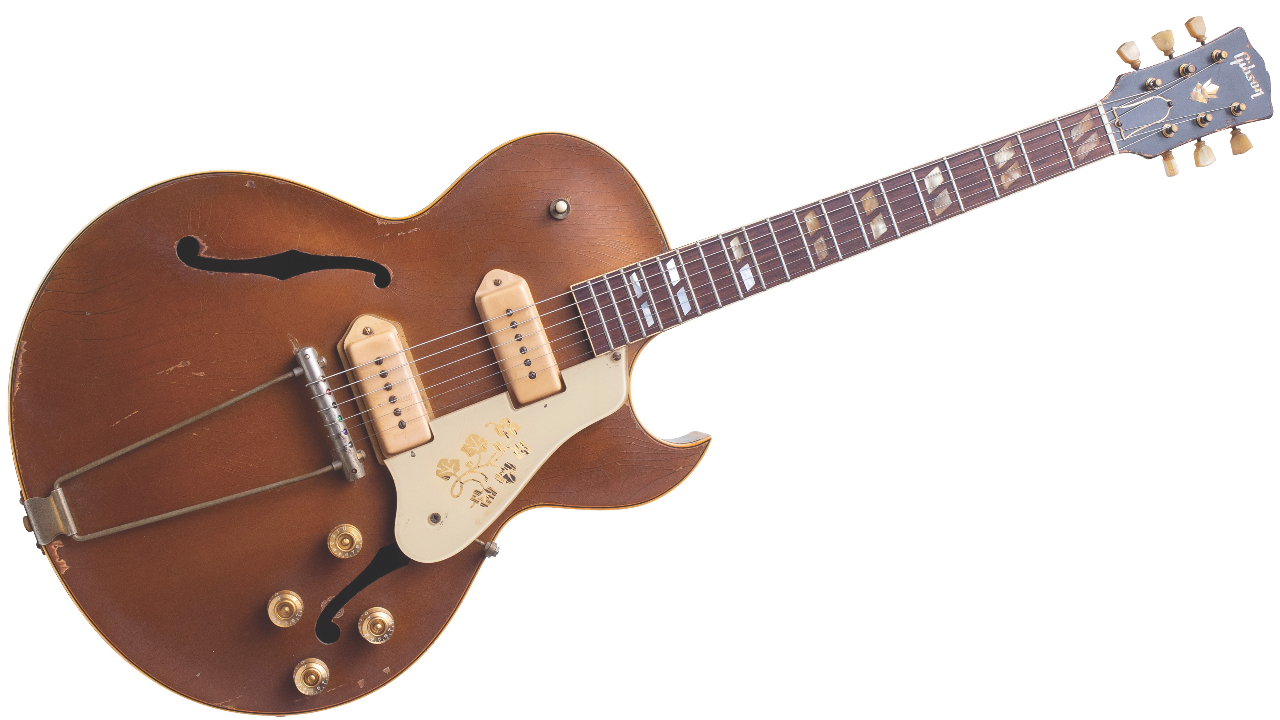
The ES-295 hit the streets in May 1952 retailing at – you guessed it – $295, with
two P-90s, an all-gold paint job and a fancy new wrapover-trapeze tailpiece suggested by Les Paul himself.
The gold finish, actually achieved with metallic bronze flakes suspended in the lacquer, is best known for its appearance on the Les Paul goldtop that arrived in March ’52, which retained this look until a sunburst finish arrived on the model in ’58.
All the latest guitar news, interviews, lessons, reviews, deals and more, direct to your inbox!
On the ES-295, however, the gold finish covered the entire guitar (other than the fingerboard, headstock and binding, of course), something done on relatively fewer Les Pauls. It was a color the guitar star had suggested himself to present a sense of luxury in his signature model, although Les Paul has also told of having asked Gibson to make an ES-175 with a gold finish in late ’51 as a gift for an injured war veteran.
All that glitters

The unusual combination wrapover bridge with trapeze “tail” was also a Les Paul invention, and infamous for having been used incorrectly on the Les Paul Model for its first year or so of production.
From its release until mid- or late ’53, Gibson manufactured the Les Paul with a neck angle that was too shallow to accommodate the strings being wrapped over the bar of this bridge, so they were wrapped under it instead. The result made standard right-hand playing techniques tricky and unfamiliar, and palm muting was particularly difficult.
The ES-295, on the other hand, marks the first instance in which this piece of hardware was used correctly, as the traditionally steeper archtop neck angle was maintained.
As a result, the wrapover-trapeze combo came into its own, providing a means of mounting a sharper-sounding and longer-sustaining bridge on a hollow-body archtop guitar. This component would also be used on the thinline ES-225 model of 1955, but it disappeared from Gibson’s parts drawer after the ES-295 went out of production in 1959.

With more ring and bite from its metal bridge bar, and a tighter, brighter tone available from the second P-90 in the bridge position, the ES-295 was primed for the grind and sizzle that came to define the sound of rock and roll guitar. Even so, relatively few notable originators of the genre in the ’50s used one, with so many other options hitting the market, and solidbodies, in particular, making inroads in the new style of music.
Scotty Moore had already swapped his ES-295’s Les Paul–designed hardware for an adjustable Gretsch Melita Synchro-Sonic and Gibson-style trapeze tailpiece by the time he was gigging it heavily with Elvis. He then traded the entire instrument for an upmarket Gibson L5-CESN in the summer of ’55.
This was arguably a move backward on the horses-for-courses spectrum as it relates to guitars suitable for rock and roll, but Moore made several classic recordings on the new archtop, nevertheless.
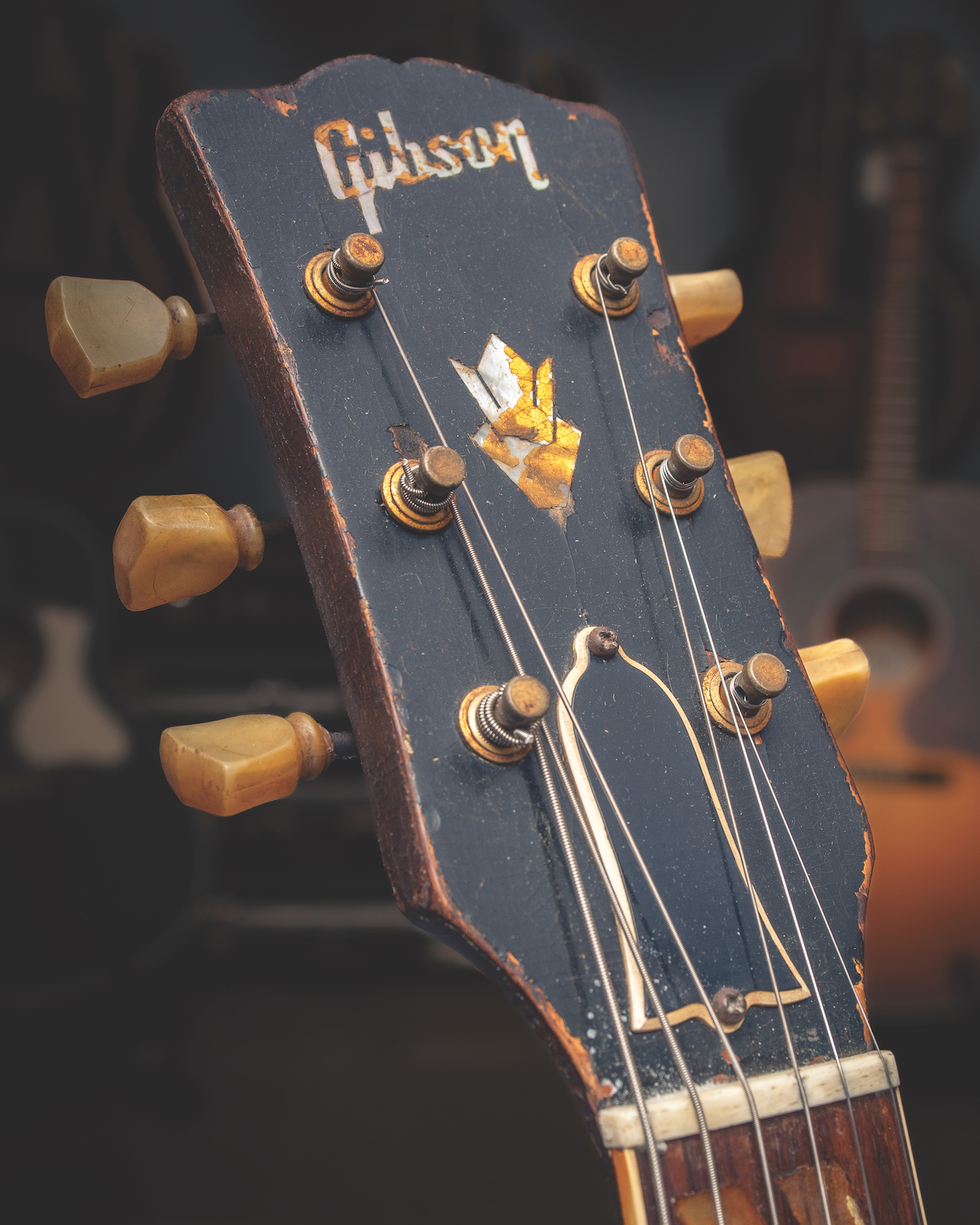
Rock before rock
Notable guitarists who gravitated to the ES-295 in later years likely did so partly because it just looked so damn cool, with its all-gold paint, complementary cream plastics, split-parallelogram inlays and gold floral pickguard motif.
What’s more, original examples were actually pretty affordable on the vintage guitar market, unfashionable as they were for players other than rockabillies. And, of course, some just dug their alternative retro look.
Danny Gatton, who could make anything with strings sound phenomenal, often played an ES-295 with added Bigsby vibrato when he wasn’t playing a Telecaster.
Geordie Walker of Killing Joke played an ES-295, very much against type, although its jazz-box build certainly didn’t tamp down the band’s power. Johnny Marr played one in the original promo video for the Smiths’ The Boy With the Thorn in His Side, although he was rarely seen with one otherwise.
Regardless, one look at the example shown here is enough to induce gear lust in electric guitarists who like their rock and roll with a touch of class.
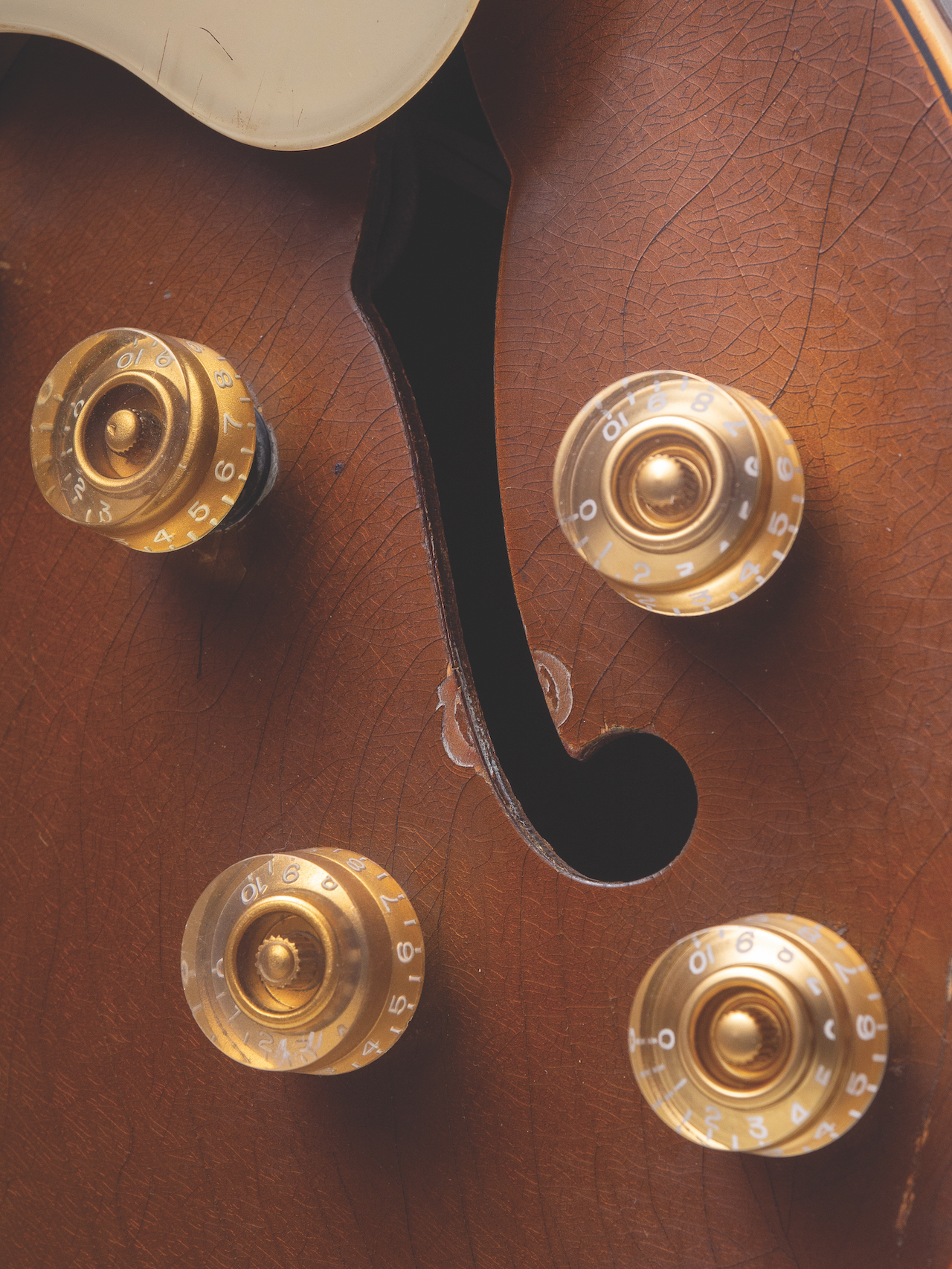
Essential ingredients
- Fully hollow archtop body
- Laminated maple top, back and sides
- Mahogany neck with bound rosewood fretboard, 24.75-inch scale
- Split-parallelogram inlays
- Combined wrapover bridge and trapeze tailpiece
- Dual P-90 pickups
Dave Hunter is a writer and consulting editor for Guitar Player magazine. His prolific output as author includes Fender 75 Years, The Guitar Amp Handbook, The British Amp Invasion, Ultimate Star Guitars, Guitar Effects Pedals, The Guitar Pickup Handbook, The Fender Telecaster and several other titles. Hunter is a former editor of The Guitar Magazine (UK), and a contributor to Vintage Guitar, Premier Guitar, The Connoisseur and other publications. A contributing essayist to the United States Library of Congress National Recording Preservation Board’s Permanent Archive, he lives in Kittery, ME, with his wife and their two children and fronts the bands A Different Engine and The Stereo Field.

